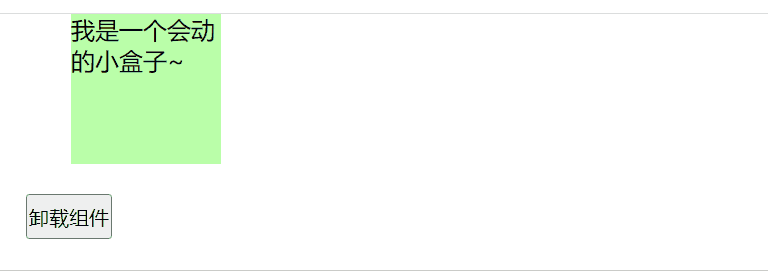一、什么是生命周期
·组件从创建到死亡,会经过一些特定的阶段。
·React组件中包含一系列钩子函数{生命周期回调函数},会在特定的时刻调用。
·我们在定义组件的时候,会在特定的声明周期回调函数中,做特定的工作。

组件的生命周期可分成三个状态:
- Mounting(挂载):已插入真实 DOM
- Updating(更新):正在被重新渲染
- Unmounting(卸载):已移出真实 DOM
二、生命周期的三个阶段
1.初始化阶段
由ReactDOM.render()触发,一般在这个钩子中做一些初始化的事情,如:开启定时器,发送网络请求,订阅消息等。
- ·constructor()
- · getDerivedStateFromProps() 从Props获得派生状态 static 静态方法 state状态取决于props使用
- ·render()
- ·componentDidMount() ====>`常用` //在页面渲染完成,组件已挂载完成时调用。
2.更新阶段
由组件内部的this.setState()或者父组件的render触发。
- ·getDerivedStateFromProps() 从Props获得派生状态
- · shouldComponentUpdate() 组件应该更新
- ·render()
- ·getSnapshotBeforeUpdate(beforeprops,beforestate) 在更新前获得快照 返回null
- ·componentDidUpdate()
3.卸载阶段
由ReactDOM.unmountComponentAtNode()触发
- componentWillUnmount() ===>`常用`
一般在这个钩子中做一些收尾的事情,如:关闭定时器、取消订阅消息
三、生命周期总结
1、重要的钩子
- render:初始化渲染或者更新渲染调用
- componentDidMount() :组件挂载之后调用,此时可以操作DOM,ajax请求,订阅信息等。
- componentWillUnmount(): 组件卸载后调用,做一些收尾工作,如:清理定时器,取消网络请求等。
2、即将废弃的钩子
- componentWillMount
- componentWillReceiveProps
- componentWillUpdate
`ps`:现在使用会出现警告,之后版本可能需要加上UNSAFE_前缀才能使用,以后可能会被彻底废弃,不建议使用
推测React团队认为提高使用成本将会间接影响我们,让我们去适应新的钩子,所以加上这个
四、案例分享
要求,页面中有一个小盒子会自动行走,当点击卸载组件时,页面组件消失。如下图所示:

示例代码:
<!DOCTYPE html>
<html lang="en">
<head>
<meta charset="UTF-8">
<meta http-equiv="X-UA-Compatible" content="IE=edge">
<meta name="viewport" content="width=device-width, initial-scale=1.0">
<title>生命周期的应用</title>
<style>
* {
margin: 0;
padding: 0;
}
.box1 {
width: 100px;
height: 100px;
background: #bfa;
}
button {
margin: 20px 0 0 20px;
height: 30px;
}
</style>
</head>
<body>
<div id="root"></div>
<!-- 引入文件 -->
<script src="../JS/react.development.js"></script>
<script src="../JS/react-dom.development.js"></script>
<script src="../JS/babel.min.js"></script>
<script type="text/babel">
class BoxRun extends React.Component {
state = {
a: 0
}
componentDidMount() {
this.timer = setInterval(() => {
if (this.state.a > 300) {
this.state.a = 0;
}
this.setState({ a: this.state.a += 50 });
console.log(123);
}, 1000)
}
// 组件将要卸载之前关闭定时器
componentWillUnmount(){
clearInterval(this.timer);
}
// 卸载组件
removeBox = () => {
ReactDOM.unmountComponentAtNode(document.getElementById('root'));
}
render() {
return (
<div>
<div className="box1" style={
{ "transform": `translate(${this.state.a}px)` }}>我是一个会动的小盒子~</div>
<button onClick={this.removeBox}>卸载组件</button>
</div>
)
}
}
// 渲染真实dom到页面
ReactDOM.render(<BoxRun />, document.getElementById('root'));
</script>
</body>
</html>